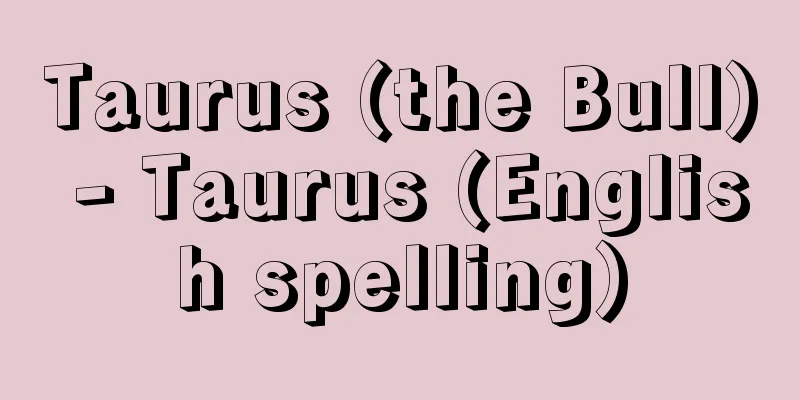Shintaro Nakaoka

|
A patriot of the anti-shogunate faction at the end of the Edo period. The eldest son of Kodenji, a headman of Kitagawa-go, Aki-gun, Tosa Province (Kitagawa Village, Kochi Prefecture). His name was Michimasa, but he was originally called Mitsutsugu, and later changed his name to Shintaro. He learned academics from Masaki Soro and swordsmanship from Takechi Zuizan, and became interested in national affairs. In 1857 (Ansei 4), he became an apprentice headman and assisted his father. In 1861 (Bunkyu 1), Takechi Zuizan and others formed the Tosa Kinnoto, and he immediately joined. The following year, he went to Kyoto and Edo with 50 of his comrades to participate in the Sonno-joi movement, returning home in 1863. After the August 18th Coup of the same year, the clan's oppression of the Imperial Loyalist Party intensified, so he defected to Mitajiri in Suo, where he continued to operate with the backing of the Choshu clan. In the Hamaguri Gomon Incident of 1864 (Genji 1), he fought alongside the Chuyutai, but was wounded and retreated to Choshu. Later, around Sanjo Sanetomi, he plotted the Satsuma-Choshu Alliance, which he succeeded in with the help of Sakamoto Ryoma in 1866 (Keio 2). The following year, in 1867, he was pardoned by the Tosa clan for defecting, and made a secret pact with Saigo Takamori of Satsuma and others to overthrow the shogunate. As a reserve force for the Tosa clan, Ryoma organized the Kaien-tai, while Shintaro gathered roshi (masterless samurai) in Kyoto and organized the Rikuen-tai in Kyoto in July, and they became part of the armed overthrow of the shogunate. On the night of November 15th of the same year, after the shogunate returned power to the Emperor, they visited Ryoma at his lodgings in Kawaramachi, Kyoto, and while they were meeting, they were attacked by the shogunate's Mimawarigumi (patrol unit) and both were slashed to death on the 17th. [Eri Sekita] "The Story of the Rikuentai by Michio Hirao (Chuko Bunko)" [Reference] |©Shogakukan Library "> Shintaro Nakaoka Source: Shogakukan Encyclopedia Nipponica About Encyclopedia Nipponica Information | Legend |
|
幕末の討幕派志士。土佐国安芸(あき)郡北川郷(高知県北川村)の大庄屋(おおじょうや)小伝次(こでんじ)の長男。名は道正、初め光次と称し、のち慎太郎と改めた。学問を間崎滄浪(まさきそうろう)に、剣を武市瑞山(たけちずいざん)に学び、国事に目覚める。1857年(安政4)大庄屋見習となり父を助ける。1861年(文久1)武市瑞山らが土佐勤王党を結成するやただちに加盟、翌年には同志50人と京都、江戸に出て尊攘(そんじょう)運動に参加、1863年帰郷。同年八月十八日の政変後、藩の勤王党弾圧が激化したため脱藩して周防(すおう)三田尻(みたじり)に赴き、以後長州藩をバックに活動。1864年(元治1)の蛤御門(はまぐりごもん)の変では忠勇隊とともに戦い、負傷して長州に退く。のち三条実美(さんじょうさねとみ)の周辺にあって、薩長(さっちょう)同盟を画策し、1866年(慶応2)に坂本龍馬(さかもとりょうま)の協力でこれに成功。翌1867年、土佐藩より脱藩を赦(ゆる)され、薩摩(さつま)の西郷隆盛(さいごうたかもり)らとの間に薩土討幕の密約を結ぶ。土佐藩の遊軍として龍馬は海援隊、慎太郎は在京の浪士を集めて7月京都に陸援隊を組織し、武力討幕の一翼とした。幕府大政奉還後の同年11月15日夜、京都河原町の下宿近江屋(おうみや)に龍馬を訪れて会談中、幕府見廻組(みまわりぐみ)に襲われてともに斬(き)られ、17日絶命。 [関田英里] 『平尾道雄著『陸援隊始末記』(中公文庫)』 [参照項目] |©小学館ライブラリー"> 中岡慎太郎 出典 小学館 日本大百科全書(ニッポニカ)日本大百科全書(ニッポニカ)について 情報 | 凡例 |
Recommend
Empress Kōken
Year of death: Hōki 1.8.4 (770.8.28) Year of birth...
Entering the sea - Umiiri
...In coastal fishing or coastal fishing, when pe...
Walvis Bay
A port town in Namibia, in southwest Africa. Popul...
Lobelia - Lobelia
A general term for the genus Lobelia in the Campa...
Lindane
…Of these, the gamma isomer was found to have the...
Kobo - Kobo
A perennial grass of the grass family found in hil...
Skill-based pay
Wages are determined based on the worker's jo...
Sigismund (King of Burgundy)
…Furthermore, in terms of religion, the Burgundia...
Batavia Castle Journal - Register in Batavia
This diary was ordered to be written in 1621 at Ba...
Johann Valentin Andreae
1586‐1654 He played an important role in the Rosic...
Shuho Takashima - Shuho Takashima
Year of death: 14th January 1866 (28th February 18...
Azam, CD - Azam
…He used clever lighting devices to create expres...
Carinthia (state) (English spelling)
A state (land) in southern Austria. It borders Yug...
Parenting ghost - Kosodate Yuurei
This is a folktale about a pregnant woman who dies...
Gosset, WS (English spelling) GossetWS
...The distribution function S n ( x ) = P ( t ≦ ...









